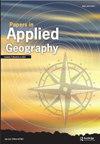Measures of Commuting and Local Transport Demand in Germany: A Case Study for Eighty-Nine Municipalities
Q2 Social Sciences
引用次数: 0
Abstract
Abstract The way the spatial distribution of residential and commercial land use and the ensuing commuting patterns influence regional transport demand has been the subject of numerous studies. The motivation of this study is to ascertain which measures of regional commuting can serve as indicators for other transport-related parameters. It uses publicly available German commuter, road network, and mobility survey data for eighty-nine municipalities in Germany. The analysis of commuting efficiency for the eighty-nine study areas required reversing the aggregation of relational volumes due to data protection issues. It revealed the study area delineation as a major factor influencing measures of commuting efficiency. In total, sixteen commuting measures and twelve mobility survey parameters were subjected to simple linear regression analysis. The regression analysis yielded low coefficients of determination (R 2) for measures of commuting efficiency. Higher R 2 up to 0.60 were found for the commuting measure of residence-based self-containment with the number of cars per household as well as the number and total distance of motorized and unmotorized trips. These findings underline the responsibility of transport system design for the development of sustainable cities.德国通勤和当地交通需求的衡量:89个城市的案例研究
住宅和商业用地的空间分布及其通勤模式对区域交通需求的影响一直是众多研究的主题。本研究的动机是确定哪些区域通勤测量可以作为其他交通相关参数的指标。它使用了德国89个城市的公共通勤、道路网络和交通调查数据。由于数据保护问题,对89个研究区域的通勤效率分析需要扭转关系量的聚合。研究表明,研究区域划分是影响通勤效率的主要因素。共有16项通勤测量和12项流动性调查参数进行了简单的线性回归分析。回归分析得出通勤效率测量的决定系数(r2)较低。以住宅为基础的自我封闭通勤措施的r2较高,最高可达0.60,与每户汽车数量以及机动和非机动旅行次数和总距离有关。这些发现强调了交通系统设计对可持续城市发展的责任。
本文章由计算机程序翻译,如有差异,请以英文原文为准。
求助全文
约1分钟内获得全文
求助全文

 求助内容:
求助内容: 应助结果提醒方式:
应助结果提醒方式:


